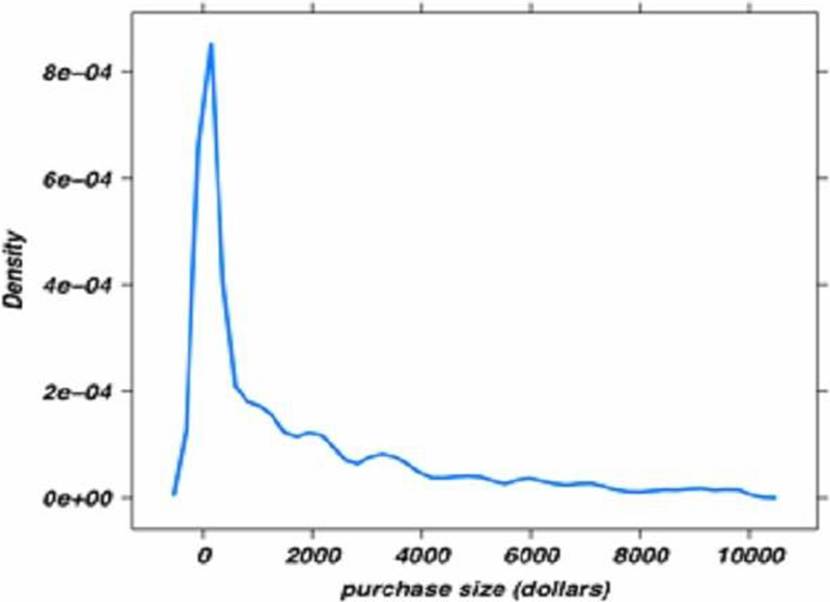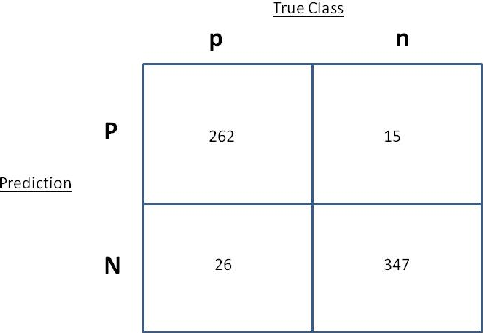Practice Free D-DS-FN-23 Exam Online Questions
Refer to the exhibit.

You have created a density plot of purchase amounts from a retail website as shown.
What should you do next?
- A . Recreate the plot using the barplot() function
- B . Use the rug() function to add elements to the plot
- C . Recreate the density plot using a log normal distribution of the purchase amount data
- D . Reduce the sample size of the purchase amount data used to create the plot
You have been given a task to improve sales force compensation of your organization. As a result of a study, your team decides to classify personnel as follows:
● Did not meet quota
● Met quota
● Exceeded 150% of quota
In which data analytics lifecycle phase should you define these categories for analysis purposes?
- A . Model building
- B . Communicate results
- C . Operationalize
- D . Model planning
Which word or phrase completes the statement? Data-ink ratio is to data visualization as _________.
- A . Confusion matrix is to classifier
- B . Data scientist is to big data
- C . Seasonality is to ARIMA
- D . K-means is to Naive Bayes
You are building a logistic regression model to predict whether a tax filer will be audited within the next two years. Your training set population is 1000 filers. The audit rate in your training data is 4.2%.
What is the sum of the probabilities that the model assigns to all the filers in your training set that have been audited?
- A . 42.0
- B . 4.2
- C . 0.42
- D . 0.042
In linear regression modeling, which action can be taken to improve the linearity of the relationship between the dependent and independent variables?
- A . Apply a transformation to a variable
- B . Use a different statistical package
- C . Calculate the R-Squared value
- D . Change the units of measurement on the independent variable
Refer to the exhibit.

You have scored your Naive bayesian classifier model on a hold out test data for cross validation and determined the way the samples scored and tabulated them as shown in the exhibit.
What are the the False Positive Rate (FPR) and the False Negative Rate (FNR) of the model?
- A . FPR = 15/262 FNR = 26/288
- B . FPR = 26/288 FNR = 15/262
- C . FPR = 262/15 FNR = 288/26
- D . FPR = 288/26 FNR = 262/15
You have been assigned to do a study of the daily revenue effect of a pricing model of online transactions. You have tested all the theoretical models in the previous model planning stage, and all tests have yielded statistically insignificant results.
What is your next step?
- A . Report that the results are insignificant, and reevaluate the original business question.
- B . Run all the models again against a larger sample, leveraging more historical data.
- C . Move forward on the model with the highest significance scores relative to the others.
- D . Modify samples used by the models and iterate until a significant result occurs.
You have been assigned to do a study of the daily revenue effect of a pricing model of online transactions. You have tested all the theoretical models in the previous model planning stage, and all tests have yielded statistically insignificant results.
What is your next step?
- A . Report that the results are insignificant, and reevaluate the original business question.
- B . Run all the models again against a larger sample, leveraging more historical data.
- C . Move forward on the model with the highest significance scores relative to the others.
- D . Modify samples used by the models and iterate until a significant result occurs.
You have been assigned to perform a study of the daily revenue effect of a pricing model of online transactions. All the data currently available has been loaded into an analytics database.
This data includes revenue data, pricing data, and online transaction data. You have completed a thorough univariate analysis of all data and have decided that there are three different models you want to test. Preliminary results show that all models have equally effective results.
What is the next step?
- A . Develop all three models and perform model selection in the next step of the process
- B . Select the model that demonstrates the most sophisticated technique and accuracy
- C . Identify which model the business owner wants and proceed with that model
- D . Prioritize models by complexity and feasibility, and proceed with the most feasible
What is the output of the K-means clustering algorithm?
- A . Centroid positioning and entropy of each record in each cluster
- B . Center of each discovered cluster and mapping of each record to a cluster
- C . Two dimensional representation of the data and the clusters
- D . Intercept and coefficients for each input variable in the dataset
